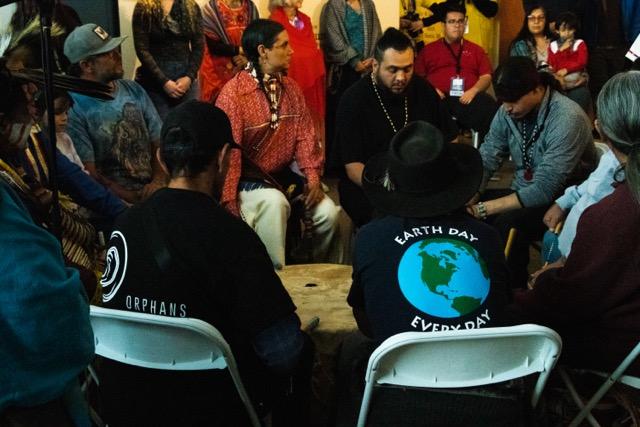By Wade Walker
Using photography and image manipulation, Molly Moreschini produces powerful depictions of loss and survival that provoke intense reactions from the viewer. She uses the death of her parents as inspiration to fuel a series of photographs which are both terrifying and intoxicating. Her work can be viewed at the CSU-Pueblo Fine Arts Gallery throughout the month of April as part of the Senior Show.
“I think that makes the best art when you take your personal experience and give the world something they can identify with.” Caroline Peters, CSU-Pueblo assistant professor of art, said.
In a collection of 10 photos, Moreschini attempts to reproduce the dreams that have been part of her nocturnal world since the loss of both of her parents over the last 2 years. In 2015, she lost her mother suddenly. Concerned about an abnormal mass, her mother went in for a biopsy and ended up on life support due to complications. The diagnosis was lung cancer and she was given a month to live, she made it 3. Moreschini was her caretaker, alongside her wheelchair-bound father, and she spent her days helplessly watching her health deteriorate. Only 8 months later, her father died from Chronic Obstructive Pulmonary Disease or COPD. Moreschini was also her father’s caretaker.
“To see the people I love the most go through that and sit there and be completely helpless is a nightmare in itself.” she said.
Sometime in the wake of her mother’s death, the dreams began. In her nightmares, she found herself in hopeless scenarios which involved either drowning, falling or suffocating. She was also surrounded by the inescapable and terrifying sounds of gasping for air, a sound that she became uncomfortably familiar with as she took care of her parents in their last days at the mercy of a respiratory disease.
“It sounds like someone drowning” she said.
It’s no coincidence that the series is comprised of works with titles such as Falling and Stuck, while the spectral Drowning features a hand breaking through the ground against a grainy fog of grey and black. She says the hand represents the strength of her father “holding on till the very last moment.” Lyme disease put him in a wheelchair but he managed to take care of his dying wife despite his own failing health. Moreschini says watching such a strong man be rendered so helpless by disease was one of the hardest parts of the entire ordeal.
“He was her rock while she was his and they supported each other through the loss of her mother,” Edward Doyle, fellow CSU-Pueblo art student, said.
The scars that a death leaves on a family is incalculable and Moreschini has still not had time to process her grief. She went from taking care of her sick mother to taking care of her sick father and now she is taking care of her maternal grandmother. While she claims she is no expert, she does have some insight into the telltale signs of a person nearing the end and that her grandmother’s time is drawing near.
“She looks like my mother and that makes it very hard,” she said.
In the most haunting photo of her collection, Pain Cutting to the Bone depicts a screaming side-profile of a face whose mouth is being stretched backwards through her neck. She says it represents the reoccurring theme of choking that she experiences in her nightmares.
“Death has always been familiar to me in my life so this is ultimately a self-portrait of how I felt and how I was dealing with everything,” she said, “because of the way it cut through me.”
The series includes 5 pieces depicting the uplifting aspects of her dreams. In many of those, her parents make an appearance and allow her a little bit of closure.
“They visit me and I welcome that,” she said.
In a field of gold, a woman disappears from left to right in her picture titled Stuck. It’s about her mother suddenly fading away. It took three months for her mother to disappear completely while Moreschini watched helplessly, but she believes that there is a place of beauty and peace where loved ones go and this photo is a representation of that idea.
“She’s trying to show how terrible things can be, but there is always some hope, there’s always a way through it.” Doyle said.
It has been a year since Morschini lost her father and she is coping with a new life on her own. She is slated to graduate in the fall, despite all her setbacks. Her parents left her a farm with 100 cows for which she is now responsible but she worries that she is too attached to the cows to properly run a beef farm. Moreschini plans on selling the farm and turning her space into an art studio for her to practice art therapy.









